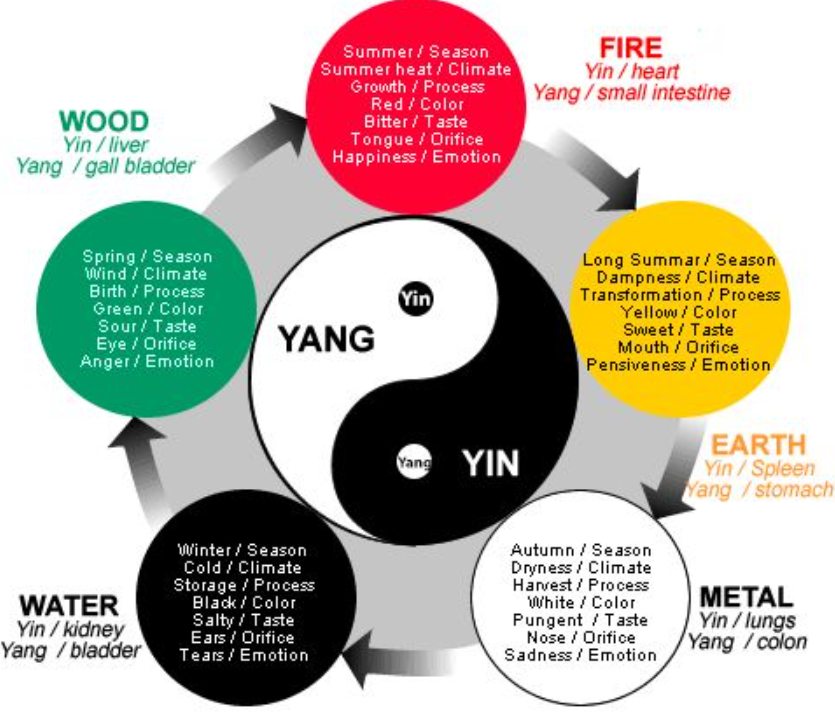How Traditional Chinese Herbs Work: The Science and Wisdom Behind Natural Healing
Traditional Chinese Herbal Medicine is a cornerstone of Traditional Chinese Medicine (TCM), a healing system that has been used for over 2,000 years. But what makes these herbs effective? This blog explores the science, philosophy, and mechanisms behind how traditional Chinese herbs work.
The Philosophy of Traditional Chinese Herbs
Traditional Chinese herbs work by restoring balance in the body, based on core TCM principles:
Yin and Yang Balance: Herbs are selected to balance the opposing forces of Yin (cooling, nourishing) and Yang (warming, energizing) [1].
Qi (Vital Energy) Regulation: Herbs can enhance, move, or calm Qi, the body's life force [2].
The Five Elements: Herbs are chosen to support specific organs linked to the Five Elements (Wood, Fire, Earth, Metal, Water) [2].
Example: Ginseng (Ren Shen) is a powerful Qi tonic, while Mint (Bo He) is cooling and clears heat [3].
How Chinese Herbs Work Biologically
While TCM emphasizes energetic balance, modern research has identified active compounds in these herbs that explain their effects:
Alkaloids: Stimulate the nervous system, providing energy and focus [4].
Polysaccharides: Boost immunity and support digestion [5].
Flavonoids: Act as antioxidants, reducing inflammation and promoting healing [6].
Essential Oils: Provide calming, antimicrobial, and anti-inflammatory effects [7].
Example: Ginger (Gan Jiang) contains gingerol, which is anti-inflammatory and supports digestion [8].
Herbal Synergy: Why Formulas Work Better Than Single Herbs
One of the most important principles in TCM is the use of herbal formulas, rather than single herbs.
Synergistic Effects: Herbs work together to enhance each other’s benefits [1].
Balanced Formulas: Some herbs target symptoms, while others protect digestion or boost overall vitality [1].
Minimized Side Effects: Balancing herbs prevent any one ingredient from being too strong [1].
Example: Xiao Yao San (Free and Easy Wanderer) is a famous formula for stress relief that balances herbs to calm the mind, regulate digestion, and support energy [1].
How Herbs Are Chosen in Chinese Medicine
During a consultation, herbs are selected based on your unique condition using TCM diagnostic methods:
Pulse Diagnosis: Identifies energy imbalances in your organs [2].
Tongue Diagnosis: Reveals heat, cold, or dampness in your system [2].
Symptom Assessment: Your main complaints help guide the choice of herbs [1].
Example: For a client with fatigue, a pale tongue, and weak pulse, herbs like Astragalus (Huang Qi) and Ginseng (Ren Shen) may be used to boost Qi [3].
Modern Research Supporting Chinese Herbs
Scientific studies have confirmed the effectiveness of many Chinese herbs:
Ginseng: Proven to enhance energy and immunity [3].
Astragalus: Boosts immune function and protects the heart [5].
Ginger: Relieves nausea and inflammation [8].
Licorice Root (Gan Cao): Soothes sore throats and supports digestion [7].
Conclusion: The Wisdom of Chinese Herbs
Traditional Chinese herbs work because they balance the body's natural energy, nourish vital functions, and target the root causes of illness. Whether you're dealing with pain, stress, fatigue, or hormonal imbalance, Chinese herbs offer a natural, effective way to restore health.
References
Chen, J. K., & Chen, T. T. (2004). Chinese Medical Herbology and Pharmacology. Art of Medicine Press.
Zhang, A. L., Xue, C. C., & Lin, V. (2010). The Five Elements and Chinese Medicine. Journal of Traditional Medicine, 25(3), 105-112.
Leung, P. C. (2006). Ginseng and Qi Regulation. Phytomedicine, 13(5), 362-368.
Li, X., & Wang, H. (2018). Alkaloids in Chinese Herbs. Journal of Ethnopharmacology, 214, 123-134.
Zhang, Y., Li, C., & Hu, X. (2019). Polysaccharides and Immunity. International Journal of Biological Macromolecules, 136, 1232-1240.
Chen, W., Zheng, R., & Zhang, S. (2016). Flavonoids as Antioxidants. Molecules, 21(6), 731.
Liu, Y., & Chen, X. (2020). Essential Oils in TCM. Journal of Traditional and Complementary Medicine, 10(4), 375-382.
Zick, S. M., & Blume, A. (2019). Ginger and Gingerol. Phytotherapy Research, 33(7), 1769-1775.



